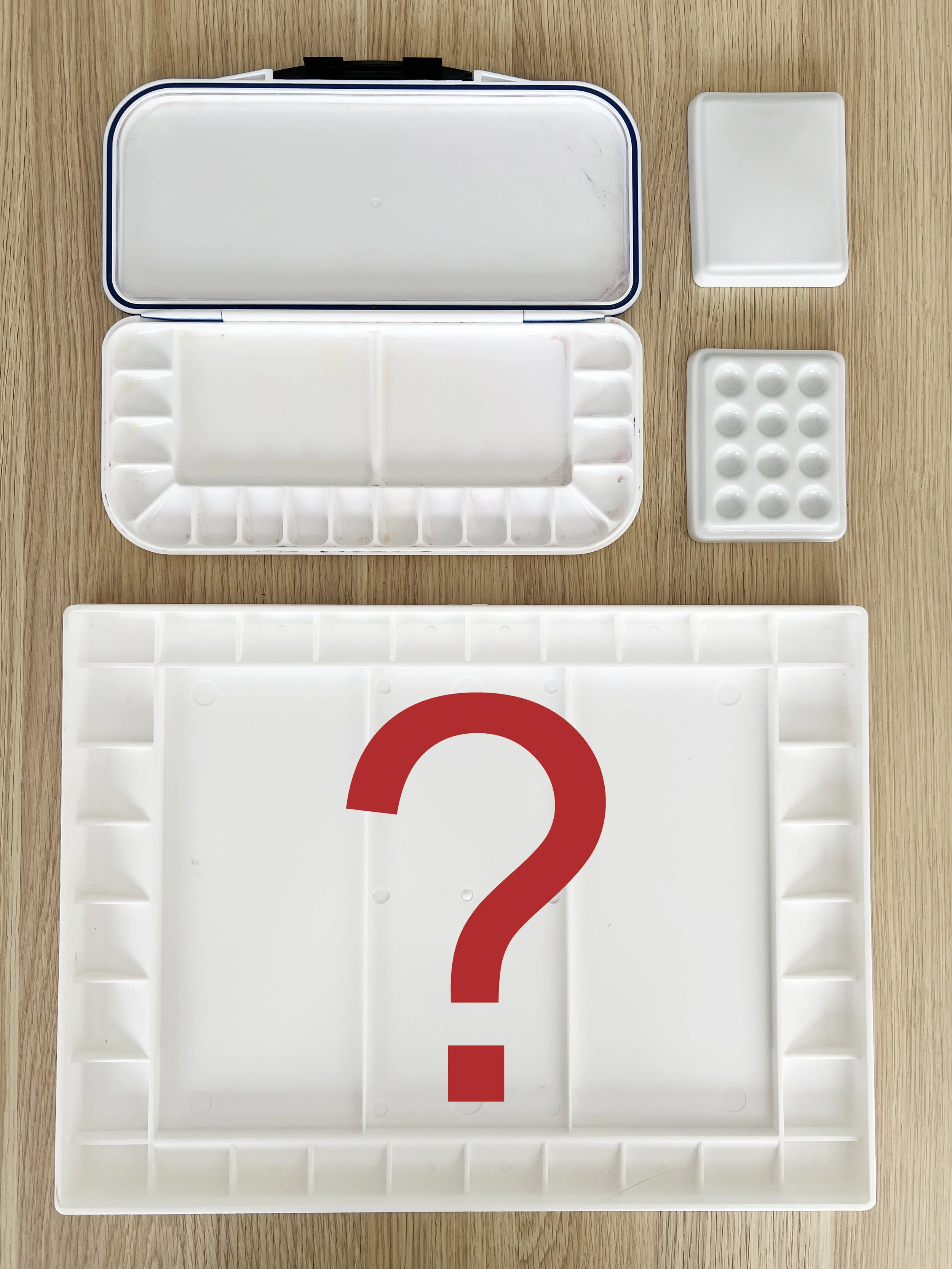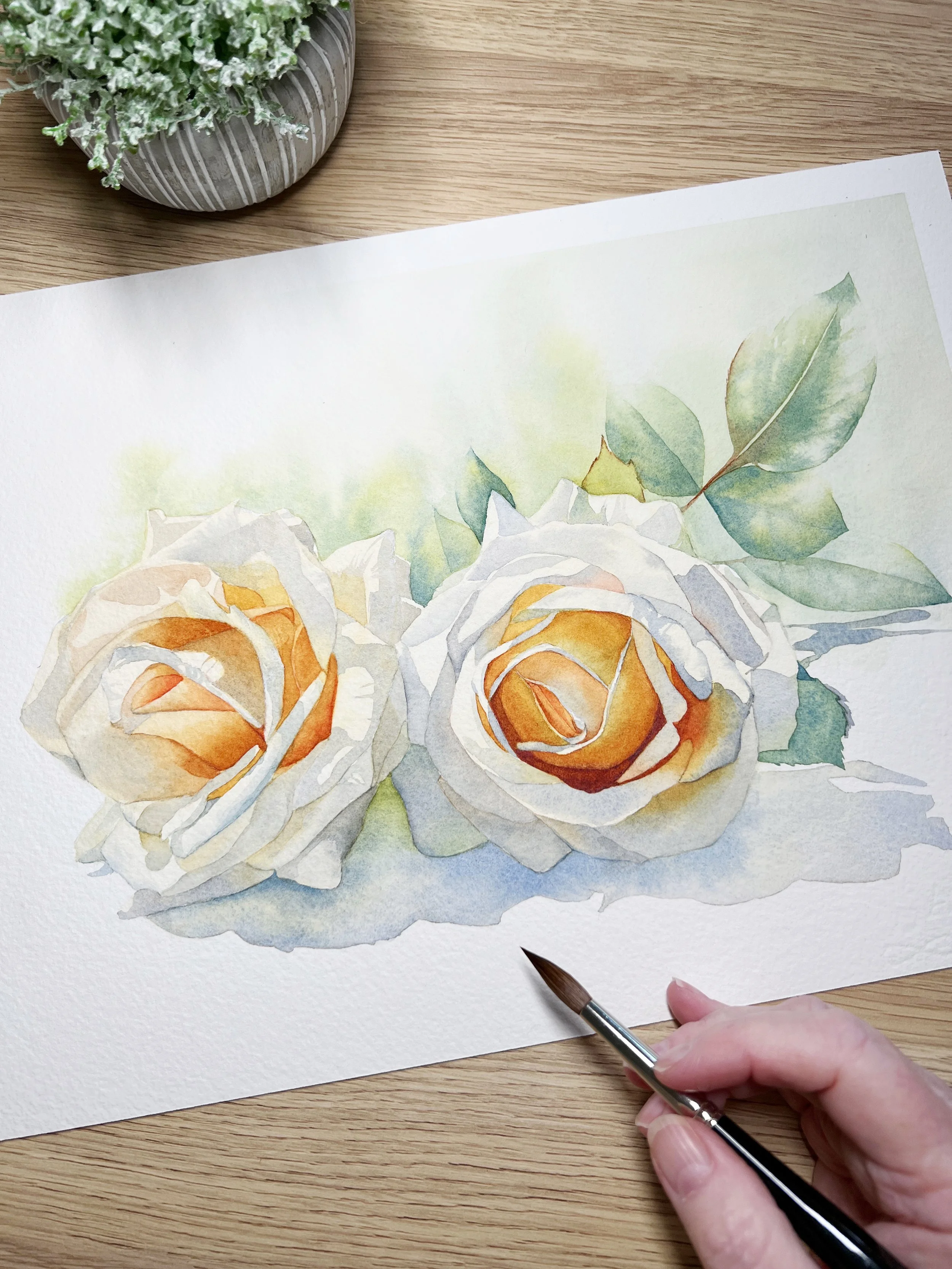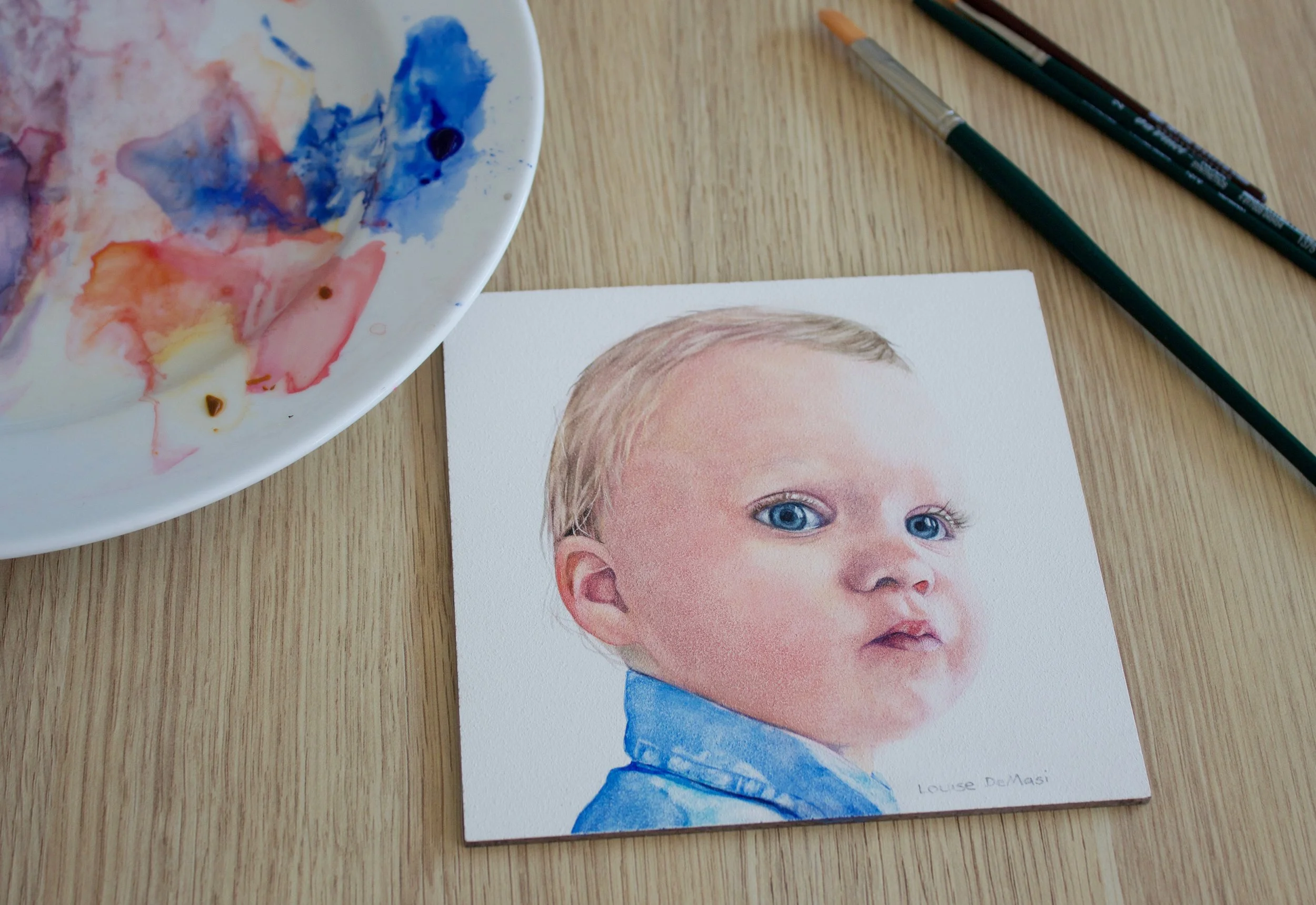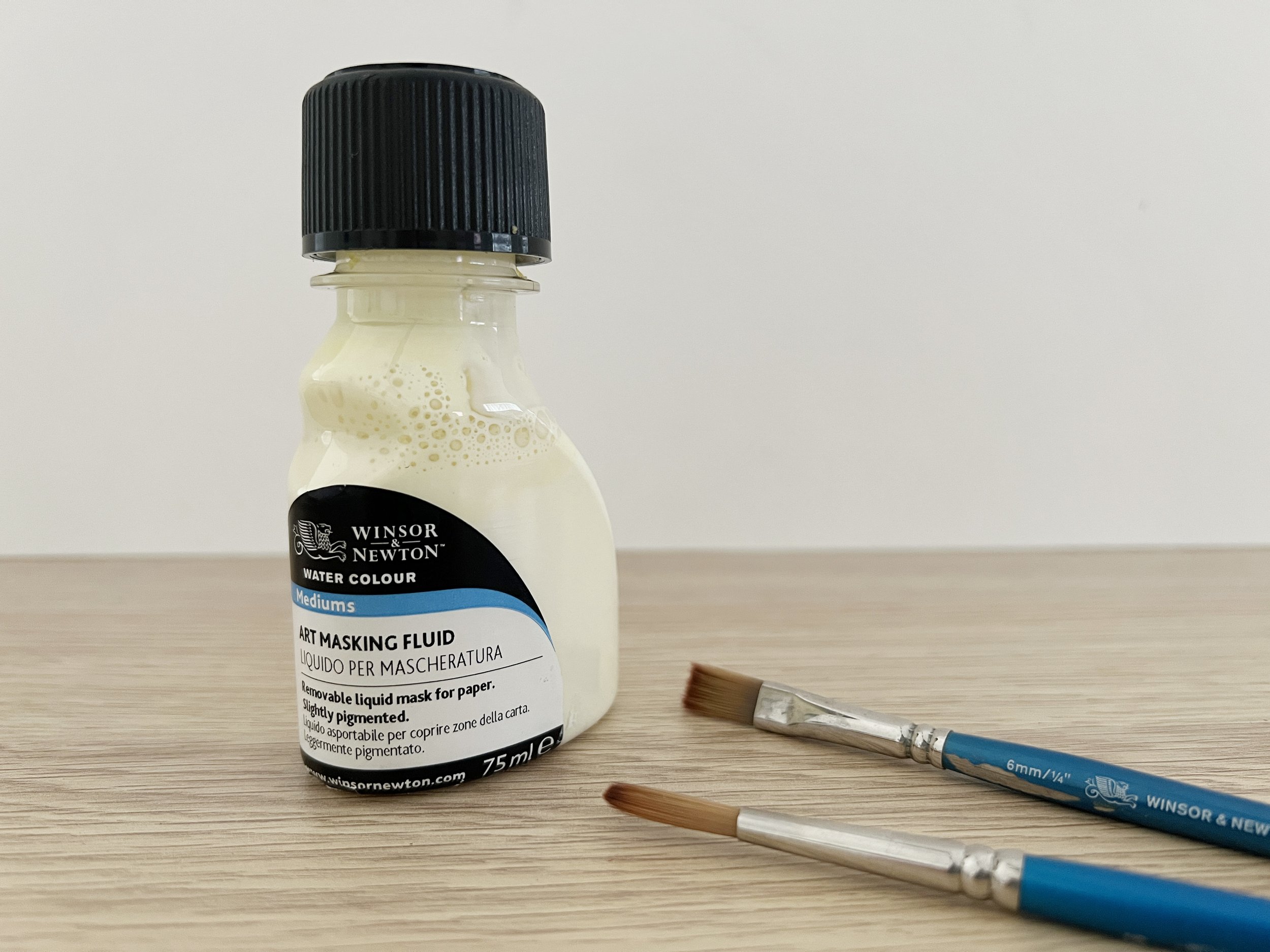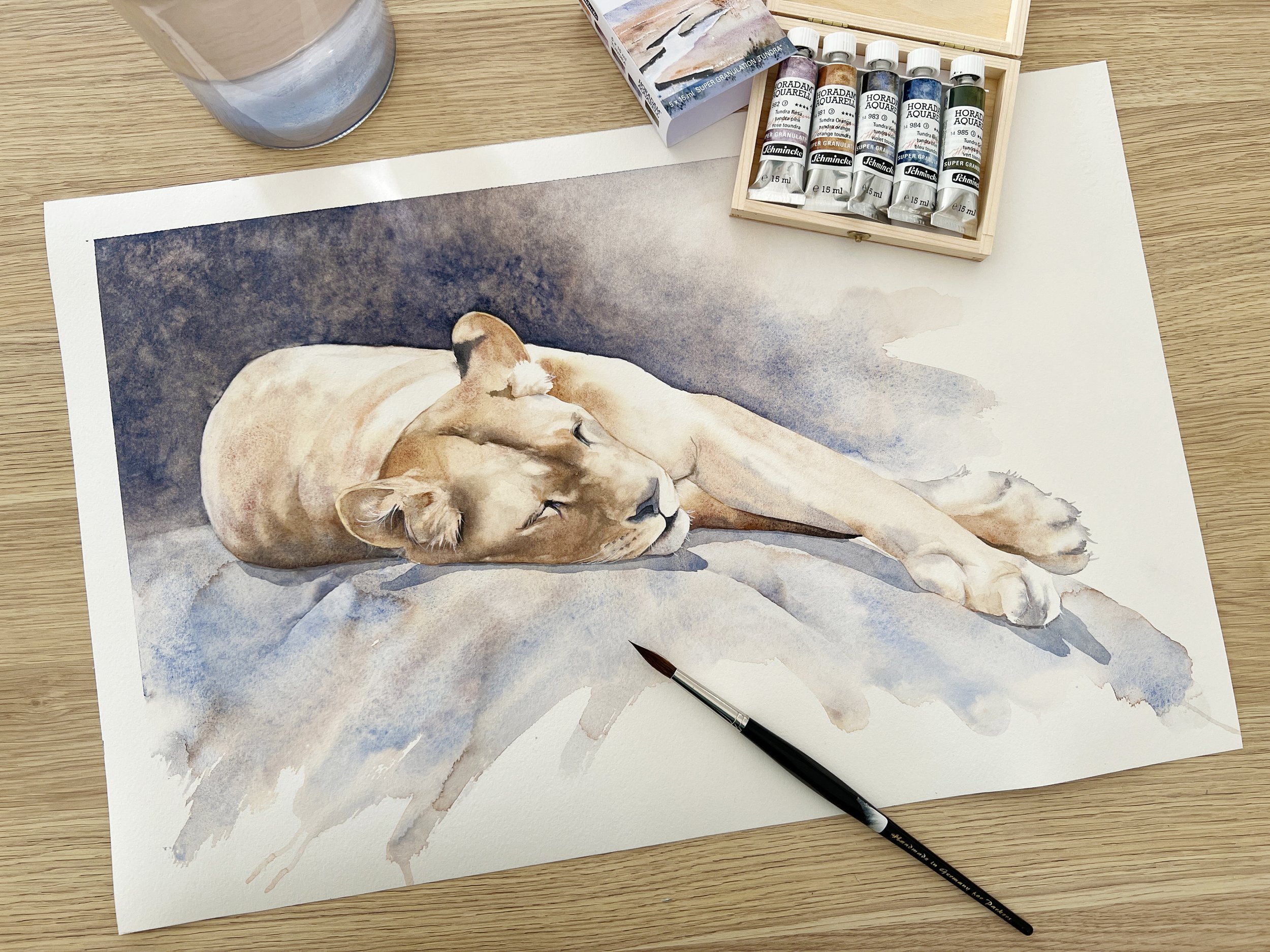I love using watercolour sketchbooks for small studies. They’re perfect for experimenting with colours and working out compositions before committing to a larger painting. These quick studies not only help me refine my ideas but also build my confidence, knowing I’ve tested my approach beforehand. A journal becomes a safe space to explore and make mistakes without pressure.
Read MoreEvery artist’s needs are different, and customising your palette for specific projects or styles can enhance your workflow. For example, you might create a separate palette for landscapes, focusing on earthy tones and a wider range of greens, while a portrait palette could include more colours for skin tones and lots of subtle neutrals.
Read MoreSealing a watercolour painting can be an excellent way to protect it from environmental factors, especially if you plan to display it without glass. When a painting isn’t framed behind glass, it is more vulnerable to moisture, smudging, and dirt.
Applying a protective sealer or workable fixative creates a barrier over the surface, adding extra durability to your artwork. For those who like to give their pieces a modern, glass-free look, sealing is essential.
Read MoreWhen working on Aquabord panels, just like with watercolour paper, it's important to wait until the paint is completely dry before adding more layers, or things can get messy. Washes on Aquabord often dry patchy, but I’ve learned not to worry too much about that since they can be smoothed out with a damp brush once fully dry.
Read MoreOnce our paintings are complete, we might refine the presentation by carefully trimming the edges, ensuring each stroke and splash is framed perfectly, enhancing the artwork’s visual appeal. Additionally, when our pieces are mounted for painting or display, cutting becomes essential to gently free them from their boards.
This meticulous attention to detail in paper cutting ensures our watercolour artworks are showcased with precision, embodying the true essence of our artistic intent.
Read MoreIn the realm of watercolour, the alchemy between artist and artist's supplies transcends the physical; it becomes a dialogue, a shared journey towards creation. Each tool and medium in my studio has been chosen not just for its quality, but for the unique voice it brings to this conversation. Let me share with you the essence of these relationships, the soul behind each choice, and the indispensable role these art supplies play in my art.
Read MoreSynthetic brushes are not only good for watercolour painting; they are an excellent choice for many artists. Their durability, versatility, and ethical production make them suitable for a wide range of watercolour techniques, from broad washes to fine details.
Whether you’re a beginner looking for a cost-effective way to start painting or a professional seeking reliable tools, synthetic brushes offer quality and performance that can meet—and even exceed—your painting needs.
Read MoreBefore diving into specific colour substitutions, it's crucial to understand colour properties: hue, value, and saturation. These are universal, regardless of the brand. Hue refers to the colour itself, value to its lightness or darkness, and saturation to its intensity. When looking for a substitute, aim for a match in these three properties, and you'll be close to the original colour.
Read MoreSynthetic brushes are made from synthetic fibres such as nylon, Taklon, or a blend of synthetic materials. They are vegan and cruelty-free, appealing to those who prefer not to use brushes made from natural hair. They may not hold water as well as natural hair brushes but with advancements in brush technology, synthetic brushes now have improved water retention. They are generally more affordable than natural hair brushes, so if you are a beginner or you are on a budget, synthetic brushes are a good choice.
Read MoreWhen it comes to applying masking fluid, your imagination is the limit. You can use synthetic brushes, ruling pens, silicone brushes, toothbrushes for splattering effects, sponges, bamboo quills and even fountain pens. Each tool brings its own unique magic to the paper.
Read MorePainting in watercolour is magical! I became captivated by it in 2011, and my excitement for it has not waned since then.
With its delicate washes, amazing luminosity, and unpredictable nature, once watercolour has you in its spell there is no turning back. Every brush stroke becomes an adventure as you watch the wet paint dance over the paper. There is no other medium like it.
Read MoreThe easiest way to tell whether a watercolour pigment is granulating is to look at a colour chart of the paints you use. The paint manufacturers indicate on their charts whether a pigment is granulating or not. You can buy the charts or you can go online and download them from the paint manufacturer's website.
Read MoreThe two most popular types of paper for watercolour painting are cotton paper and rag paper. While the terms "rag" and "cotton" are often used interchangeably, there are slight differences between the two.
I’m going to get a bit technical here so bear with me.
Read MoreThree common water problems happen to me all the time when I paint but fortunately I know how to fix them when they do.
Read More
